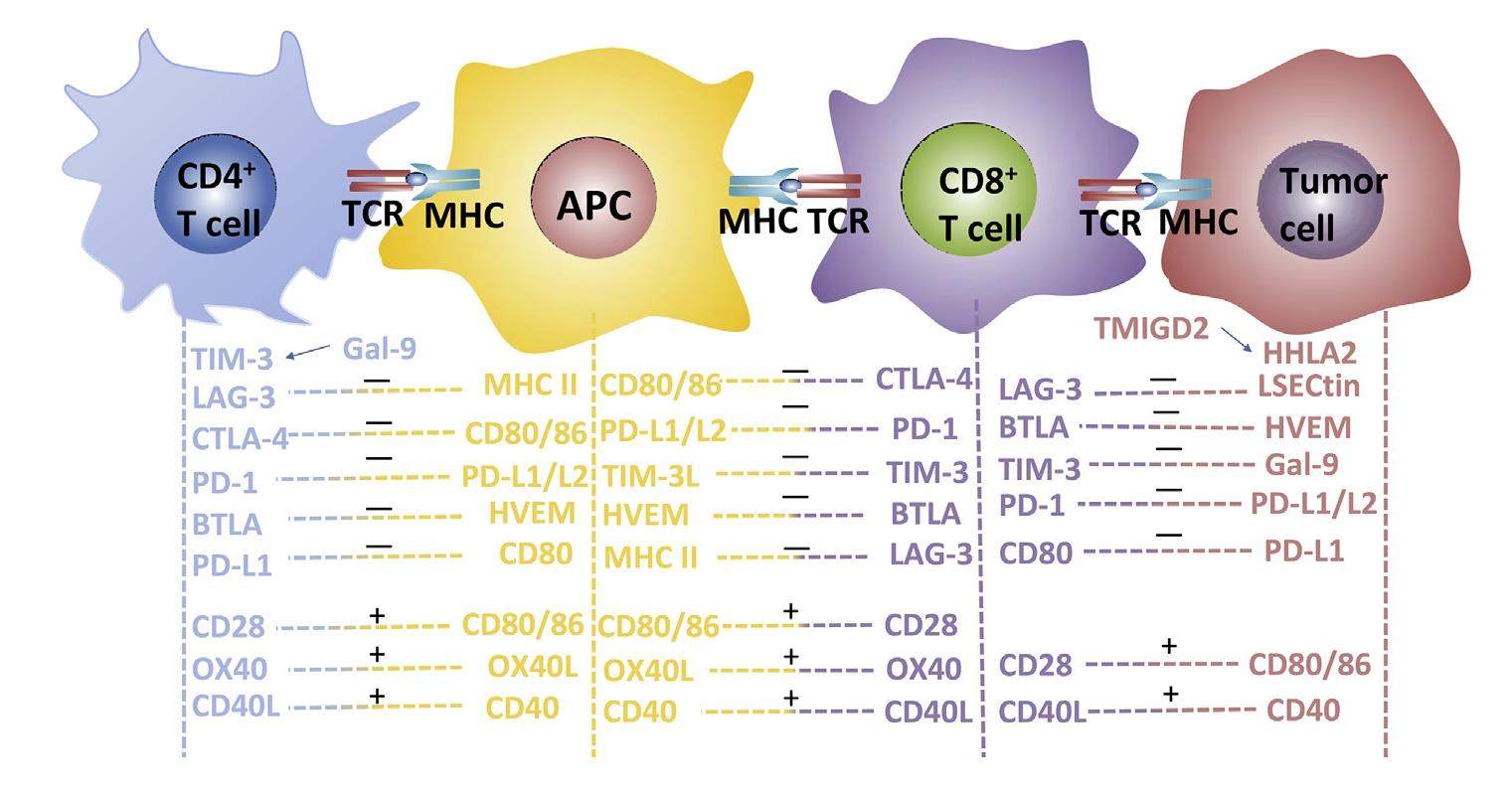
Immune checkpoint: The novel target for antitumor therapy


Inhibitory checkpoint molecules include programmed cell death-1 (PD-1), programmed cell death ligand-1 (PD-L1), cytotoxic T lymphocyte antigen-4 (CTLA-4), human endogenous retrovirus-H Long terminal repeat-associating 2 (HHLA2), B7 homolog 4 protein (B7-H4), T cell membrane protein-3 (TIM-3) and Lymphocyte-activation gene 3 (LAG-3), which are up-regulated during tumorigenesis. These pathways are essential to down-regulate the immune system by blocking the activation of Tcells. In recent years, immune checkpoint blockers (ICBs) against PD-1, PD-L1, CTLA-4 or TIM-3 has made remarkable progress in the clinical application, revolutionizing the treatment of malignant tumors and improving patients' overall survival. However, the efficacy of ICBs in some patients does not seem to be good enough, and more immune-related adverse events (irAEs) will inevitably occur. Therefore, biomarkers research provides practical guidance for clinicians to identify patients who are most likely to benefit from or exhibit resistance to particular types of immune checkpoint therapy. There are two points in general. On the one hand, given the spatial and temporal differential expression of immune checkpoint molecules during immunosuppression process, it is essential to understand their mechanisms to design the most effective individualized therapy. On the other hand, due to the lack of potent immune checkpoints, it is necessary to combine them with novel biomarkers (such as exosomes and ctDNA) and other anticancer modalities (such as chemotherapy and radiotherapy).
